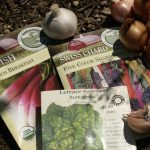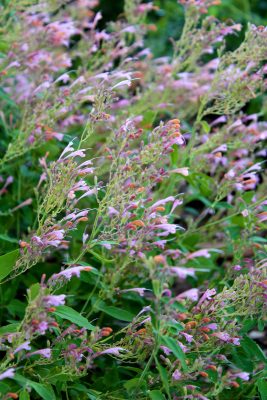What’s wrong with my ornamental peach tree? Is this a disease or an insect?
Thank you to Jennifer Loeffler for this great question! Her ornamental
peach tree is bleeding marble-sized balls of sap along the trunk, as well as the middle and upper branches. As a good plant detective, she peeled off the hardened balls of sap and looked underneath. At first, she didn’t see any holes, until she used a magnifying glass.
While holes on fruit trees often indicate borers, Jennifer didn’t see any insects or larvae, and the holes that she saw were very small. She also noticed that all of the branches with oozing sap had very few leaves on them, while the rest of the tree appeared healthy.
Well, this is a great and timely question. With our record-breaking drought and heat, all plants and trees are suffering, and fruit trees are even more sensitive to drought stress than other trees. We consulted Dr. Larry Stein and Jim Kamas, fruit tree specialists with the Texas AgriLife Extension Service, and they both agreed that the problem here is bacterial canker, which is very common on stressed peach, plum, and other stone fruit trees.
Unfortunately Jennifer, as with most plant diseases, there is no cure. The best thing to do is to prune out the affected, leafless limbs and then begin a thorough watering and fertilization regime for the tree. Be sure to water year-round, not just in the summer. Proper watering and fertilization are also the best way to prevent bacterial canker before you get it. And be sure to watch for rain during the fall, winter, and spring, and adjust your irrigation regime appropriately.

 Doris Green
Doris Green Sam Slaughter
Sam Slaughter Growing Garlic
Growing Garlic Daphne Richards
Daphne Richards
 Trisha Shirey
Trisha Shirey